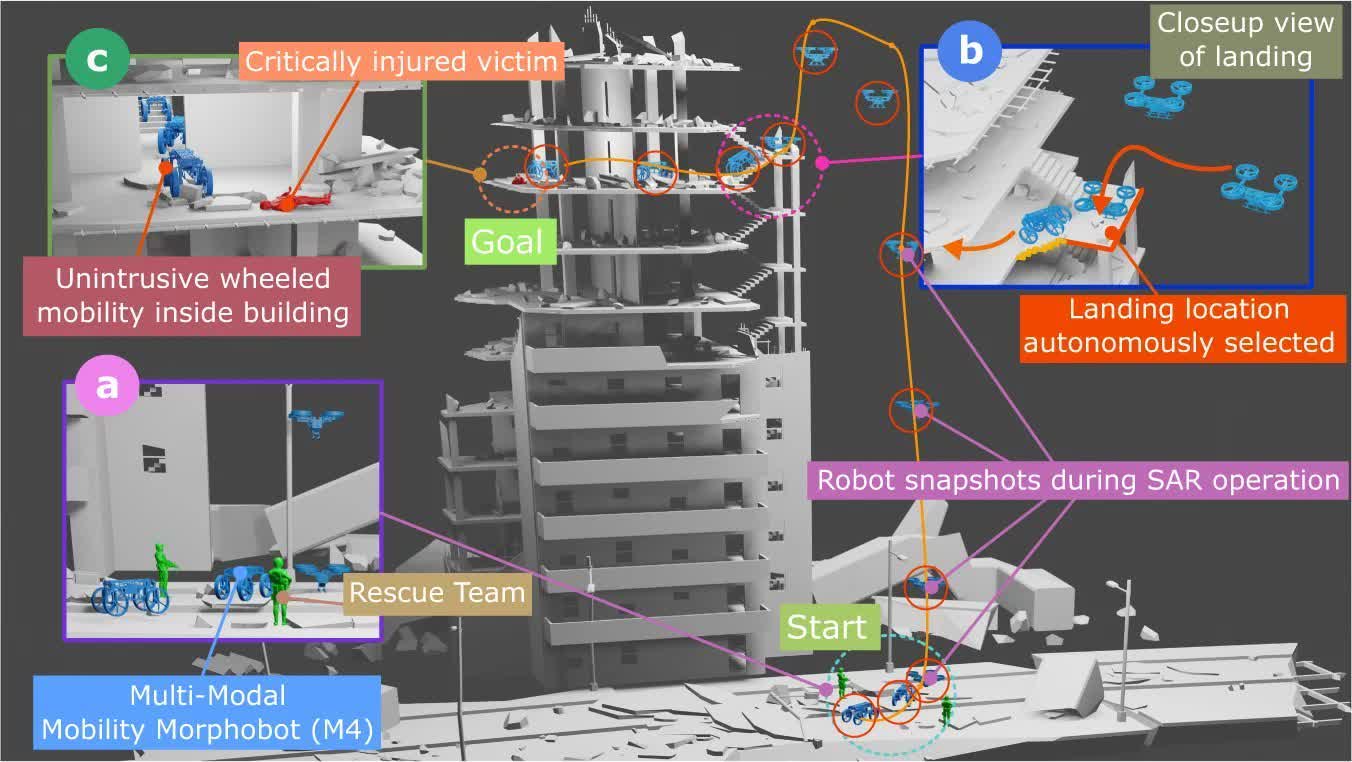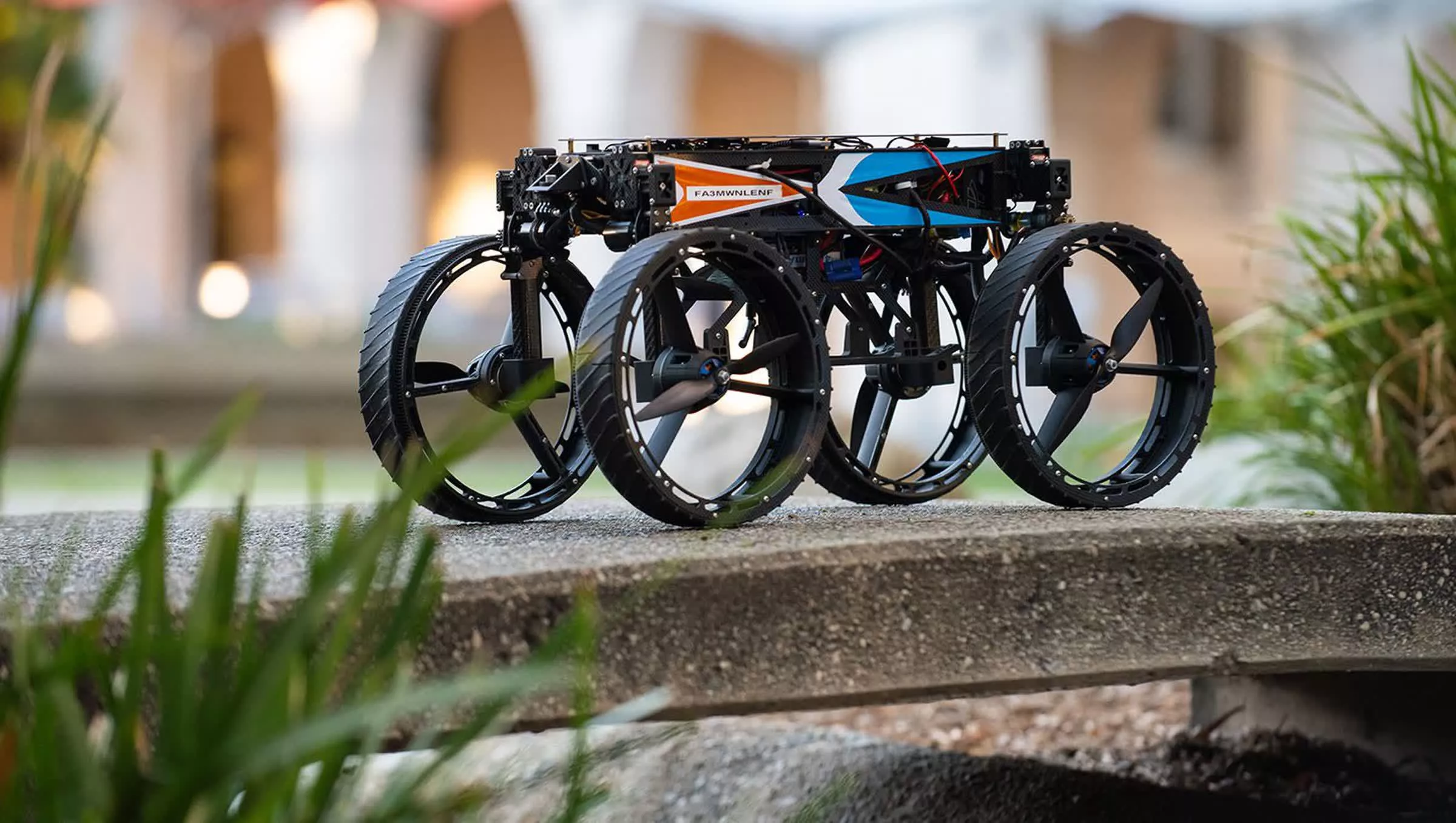Why it matters: CalTech recently unveiled an all-terrain vehicle called M4, which is short for Multi-Modal Mobility Morphobot. The moniker comes from the vehicle's unique ability to use AI to analyze surrounding terrain and then transform to configurations based on the obstacles in its path.
On Thursday, CalTech announced that M4 is now a candidate for becoming NASA's next Mars rover. The vehicle, powered by Nvidia's Jetson platform for edge AI and robotics, can decide whether to drive like a car, fly like a drone, or walk and crawl like an animal, depending on the conditions. According to the researchers who began developing it in 2020, M4 has eight distinct modes of travel.
"It grew in the number of functions that we wanted to do," Aeronautics and Bioinspired Engineering Professor Mory Gharib recalled in today's press release. "When we proposed it to our design team, at first, they all said, 'no.'"
Eventually, the design team got on board and finished a limited PoC (proof of concept) prototype in June of this year. The idea is relatively straightforward – use independent appendages to perform multiple mobility tasks. So, the robot rolls on four wheels over smooth to mildly rough terrain. If things get too rugged, the M4 can crawl using its wheels as feet, even standing on two wheels if necessary. If it encounters an obstacle that it cannot drive or walk over, it orients its wheels horizontally and flies like a quad drone.
It has various other auxiliary movements, as well. For instance, it can crouch low to roll under an obstacle or navigate a steep incline on its back wheels, while the front ones act as propellers to give it extra power to climb the hill.
Since publishing their research in Nature Communications, Professor Gharib says the team has been "inundated" with various use-case proposals for the bot. However, it was NASA and JPL that provided CalTech with its second round of funding for the M4. So, it's no surprise that NASA is currently conducting transformation and landing tests for the potential Mars rover.

"We're kind of dizzy about how it suddenly got so much attention," Gharib said. "Different organizations want to do different things and are coming to approach us. At NASA, we're being tested right now for transforming while landing."
Gharib and his team envision Earth-bound uses such as search and rescue operations and firefighting. Multiple fire departments in the Los Angeles area have expressed interest in using the autonomous drone. The M4 would also be great for package delivery. That function would likely require a considerable design modification but is within reasonable bounds.
In fact, CalTech is working on a significantly bigger design that can handle heavier payloads, travel further, and have longer flight times. The current model can only travel as fast as 40 mph for 30 minutes on one charge, which is fine for testing. However, that and its size limit its use for much else, especially missions to Mars. The team had no word on how long development on a larger, more robust model would take.
